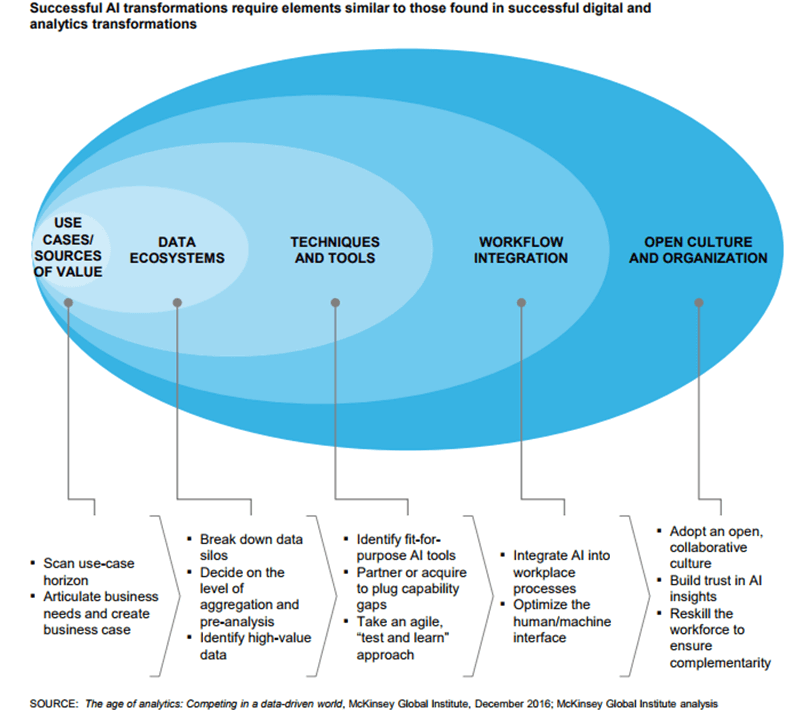 25 June 2025 · Articles
25 June 2025 · Articles
Artificial Intelligence and its Use Cases in Publishing
Everybody is talking about Artificial Intelligence (AI) right from Google, Facebook, Amazon to small companies. There are many tech startups trying to solve industry challenges through AI solutions. Most of these companies are acquired by the big companies to scale up their AI capabilities and use the solutions to solve their own challenges or innovate new products.
What is AI? In the simplest terms, AI is the part of computing that gathers information from us, from the online world, and importantly learns from the information collected. Most of the AI solutions available in the market, study the data collected from our daily information consumption and give us recommendations to suit our convenience. Sounds simple but behind the scenes, there is a complicated algorithm that runs and displays the desired results. This may sound familiar if you are using apps like Siri, Ok Google and Netflix.
AI technology has been in existence for quite some time. Amazon and other big retailers have been using AI to learn individual purchase history and recommend other products, similarly, Netflix suggests videos and shows based on the individual’s past viewing history. So, we have been consuming AI technologies, we need to just figure out how these use cases can be used for the publishing industry.
AI and its technologies are hot buzzwords today, everybody is talking about it without understanding the true meaning and its power. Artificial Intelligence, Machine Learning, Natural Language Processing are often interchangeably used. There are fundamental differences between each and it is important to understand them before you plan to work on them.
For all the publishers with a limited technical background, let the techies not take you for a ride, here are a few basics for you to keep you engaged in the technical conversation
- Artificial Intelligence (AI) helps in building systems that can do intelligent things
- Subset of AI are
- Machine Learning (ML) helps in building systems that can learn from experience
- Natural Language Processing (NLP) helps in building systems that can understand language
- When NLP and ML are used together, it helps in building systems that can learn how to understand language

Source: hackernoon.com
ColdFusion, a video channel that talks about technology, has further explained the AI concepts with examples in a 10 min video.
Now that we have understood the basic concepts about AI, let’s see some uses cases that could be used in the publishing industry.
- Search
Most of the publishers have gone online with a user-focused digital platform. Many open search technologies like Solr, ElasticSearch, LucidWorks, OpenSearch and so on are already being used by the publishers. AI or to be more specific machine learning algorithms if used for search can help your end users get the right information within few seconds. The key would be to build machine learning algorithms that learn from user behaviour and provide information in various formats including text, pdf, images, videos and other digital assets. This is a sure shot winner to increase customer experience and to earn your brand loyalty.
- Smart recommendations
Considering the same use case from Netflix, AI can be used by publishers to recommend articles, research papers and other relevant resources to the user based on their search or past usage history. Combine this with semantics and the users can get exactly what they have been looking for.
- Personalisation
Machine Learning algorithms can learn the behavioural patterns of the users and personalise the content to deliver the right message to the right audiences. For instance, some users may like the information in the form of graphs, numbers or visuals rather than long text, the algorithms can learn the user pattern and personalise their content consumption showcasing the desired format at the top.
- Short reviews and summaries
The attention span for an individual has further reduced to 8 seconds. This is all we have to grab the user’s attention and make him stay longer on the website. Especially in the case of journals, chapters, research papers, academics or stories, a short review or summaries could help the user decide and stay longer. Using Natural Language Processing (NLP), coherent and accurate snippets of text could be produced from longer pieces.
- Customer Service
The AI chatbots, voice search or AI-assisted human agents are improving the quality of the customer service. Be it a researcher, editor, librarian or a student, the enquiries would differ based on the user and other demographics. With the help of deep learning ML and NLP, algorithms can be developed to provide the right answers in no time. Combine this with text analysis and computational linguistics, you can take a step forward with sentiment analysis to decipher your user’s mood and react accordingly.
- Use of Social Media
Leverage the power of machine learning to optimize social media channels, identify the right target audience, personalise the content and timing for your post. Use NLP to understand and analyse social behaviour and with the combination of both the technologies, manage your reputation before it gets out of hand.
- Automate internal processes
Publishing workflow includes all teams – Publishers, Editors, Production, Legal, Developers, and Marketing. Each team has their own internal workflows and processes. Replacing some of the manual processes with automation can reduce time to market. For example, an algorithm to peer review the research papers, or conduct a copyright test or do a reference check can reduce the workload of the teams and time taken to do the tedious manual job.
- Security
Let’s not forget security. Ransomware, Sci-hub and other hacking attempts are a result of some vulnerabilities that have been ignored on our digital platform. Machine Learning algorithms can focus on prediction and easily detect a known attack learnt from earlier data.
There may be many more AI uses cases publishers may be working on, but this is an easy start. However, just understanding AI its use cases are not going to move the boat forward. You need to build proper infrastructure and a conducive environment to build AI solutions. You need the right skills, software technologies, hardware technologies with a strong vision to build AI solutions. It needs time, patience, efforts and commitment to be a forerunner in technology and ahead of the competition.

Putting these jigsaw pieces together, many companies are embracing AI technologies to accelerate their digital journey. AI becomes meaningful and impactful when it has access to large amounts of high-quality data and is integrated into automated work processes. AI is not a shortcut to these digital foundations but is a strong powerful extension of them.
For more on this topic, register for our 5th Annual Publishing Conference on 2nd October 2017 in London, UK.



